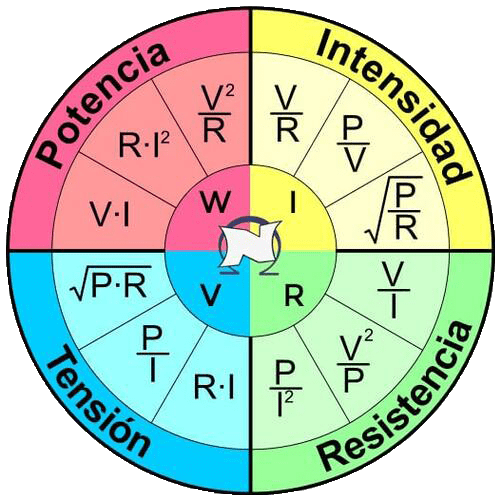Resistors are a fundamental element in electrical circuits. Its ability to hinder the passage of electrical current plays an essential role, preventing systems from being overloaded, reducing the risk of breakage. Therefore, it is important to know at all times how to calculate resistors. From Nugar Resistor Technology We offer you the possibility of using our calculator based on Ohm's law.
This law begins in Germany, where the scientist Georg Simon Ohm. In 1827 he published a book in which he proposed what is now known as Ohm's law.
In simplistic terms, this postulate consists of a law that establishes the fundamental principles, from which it is possible to understand how electrical circuits act and how to calculate electric current.
Furthermore, it proposes the fundamental maxims that govern the relationship between the intensity of an electric current, its electromotive force and resistances. The law that bears his name is based, in essence, on these maxims from which it ends up establishing that I = V / R.
This implies, in more technical terms, that the potential difference V that is applied between the opposite ends of a conductor is directly proportional to the intensity of the current I that flows through that conductor. This establishes the formula to calculate resistor and the mechanism to know how to calculate the value of a resistance and this is how our resistor calculator with Ohm's law works.


To understand precisely what the Ohms calculator is about, we must first focus on its main component: the Ohm. This word refers to the unit of electrical resistor, which is equivalent to the resistor of a wire and in which the current of one ampere is produced from a potential of one volt.
With this concept clear, we can talk about understanding how to calculate Ohms, delve into the resistor formula and know how to use Ohm's law table, all of this to correctly perform resistor calculations.
The calculator based on Ohm's law is a precise method that is implemented in order to calculate four essential values: obtain the resistance calculation, determine the voltage calculation, calculate current and calculate the power. In the resistor calculator you can see four boxes, in which we can enter two values that we know to determine the remaining variables: Power (W), Voltage (V), Current (A) and Ohms (R).
We already know that Ohm's law is an elementary postulate, from which a technician will be able to determine the link between three values that give life to an electrical circuit: resistance, current and voltage.
That is where a concept that we have already talked about in this article comes into play again: the Ohms calculator or resistor calculator with Ohm's law. And at this point we must remember that, according to Ohm's law, voltage is equal to current times resistance, and that volts are equivalent to amperes times Ohms.
So, if a technician knows two of the three existing values (voltage, current and resistance), he will have everything necessary to be able to calculate the remaining one. This is how we delve into the fundamental principles to perform the resistor calculation.

To comprehensively understand how to calculate resistances from Ohm's law, it is advisable to delve into the basic concepts that make up this postulate of the German scientist Georg Simon Ohm. Since, it is not enough to be able to mention the different variables, but it will also be extremely useful to internalize the meanings.
As we already know, the theory developed by Ohm establishes the basis for understanding how resistors are calculated by linking three fundamental electrical values, such as voltage (expressed in volts), current intensity (in amperes) and electrical resistance. (in Ohms).
This magnitude reveals the opposition that an electrical component presents to the circulation of electric current.
Here it can be said that the higher the resistance of a component, the greater the obstruction it will represent to the flow of electric current.
This will directly impact the amount of current that will flow through the circuit in question. It should be clear that electrical resistance is measured in Ohms.
Measured in amperes, current intensity can be defined as the number of electrons that pass through a wire each second.
This means that the greater the number of electrons in circulation in a second, the greater the amount of current that will flow through the conductor in question.
This electrical quantity is basically the energy used to drive electrons through an electrical system.
This implies that as the voltage increases or is higher, then the energy will also be higher, and this will generate as a direct consequence an acceleration in the circulation of electrons.
Thus, the higher the voltage, the final result will be the increase in electrical current. At this point it is key to take into consideration that voltage or tension is measured in volts.

Discover our entire catalogue of resistors with the most specific details to resolve your doubts and the most valuable information about our products.
Contact us to receive the catalogue in digital and/or physical format.
General
info@nugar.es
Business
comercial@nugar.es
Shopping
compras@nugar.es
Phone
+34 938 33 43 32